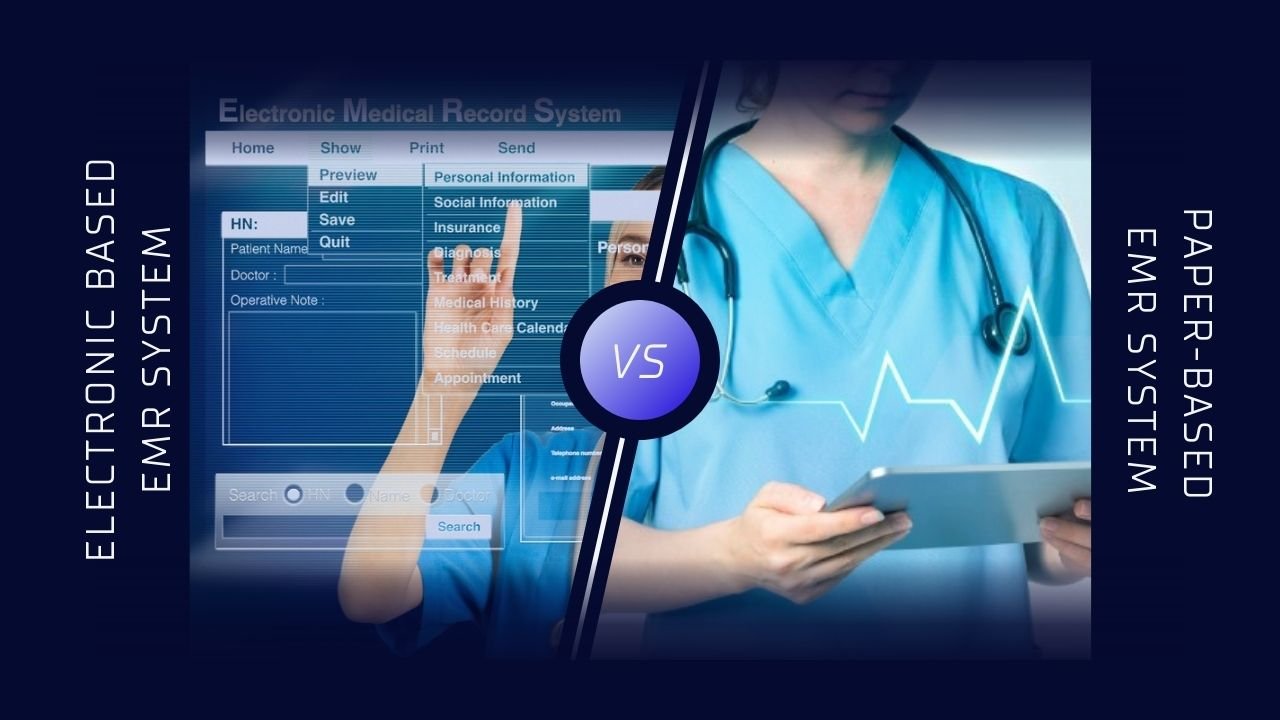EMRs (Electronic Medical Records) are critical in how healthcare professionals keep medical records, provide treatment, and manage finances. EMR capabilities extend beyond quality patient care to include comprehensive inpatient and outpatient programs for healthcare facilities.
After years of keeping records on paper, the transition to electronic mediums may appear difficult. However, thanks to technological advancements in the healthcare sector, electronic medical record software has made it much easier to access patients’ medical histories.
Let’s take a closer look at the differences between paper and electronic medical records.
Switch from Paper-Based to Electronic Medical Records
Managing thousands of files, papers, and reports can be difficult because physical space is needed to keep manual data entries. It necessitates proper management, sorting of each document, and additional protective measures for integrity. Maintaining patient records on paper can be time-consuming and intimidating; thus, EMRs can be very beneficial.
Medical Records on Paper vs. Electronic Medical Records
- Data Administration
Paper records necessitate the use of specialized personnel to properly care for and organize various patients’ healthcare documents. In contrast, EMRs necessitate fewer resources, less time, and no physical storage space.
- Cost Effectiveness
Paper records may appear to be less expensive than EMRs. Though healthcare providers may incur initial costs during EMR implementation, the costs of maintaining records will decrease significantly over time. For healthcare practices, paper records take up a lot of space, whereas cloud-based EMR software reduces the need for extra space and materials.
- Data Safety
Paper records have a higher risk of data loss, whereas EMR provides a comprehensive platform where patients’ healthcare records are kept securely and without data loss. Because electronic information can only be viewed, edited, or maintained by those who have been granted access, it is well-protected and less vulnerable to breach.
- Timesaving
Managing many paper trails and files can be difficult. Not to mention that manually storing information can be time-consuming. Maintaining paperwork takes a lot of time and energy, which interferes with focusing on more important tasks. On the contrary, EMR software can easily store data and generate reports, saving time and improving work efficiency.
- Backup of Data
Keeping a backlog of paper records can be difficult. It not only increases work but also necessitates more storage space. Cloud-based EMR systems are constantly updated with new technology and maintain a complete database backlog. Furthermore, data loss in the old format can be recovered easily and quickly.
Wrapping Up
EMRs are digital versions of medical records that can be used by healthcare providers to track patients’ health information. EMR is integrated with case management software and provides additional functionality to healthcare facilities for claim management, scheduling, patient health records, and information sharing. Medical history, diagnoses, lab results, doctor’s notes, and medications are typically included.
As computers and the internet became more popular, digitally managing and sharing medical records became important in all areas of medical practice. Medical records are now more accessible than ever before, thanks to EMR and EHR systems. Improvements and custom upgrades can also be made to improve administration, clinical management, and patient-physician interactions.
Also Read: How to handle hair loss?








Leave a Reply